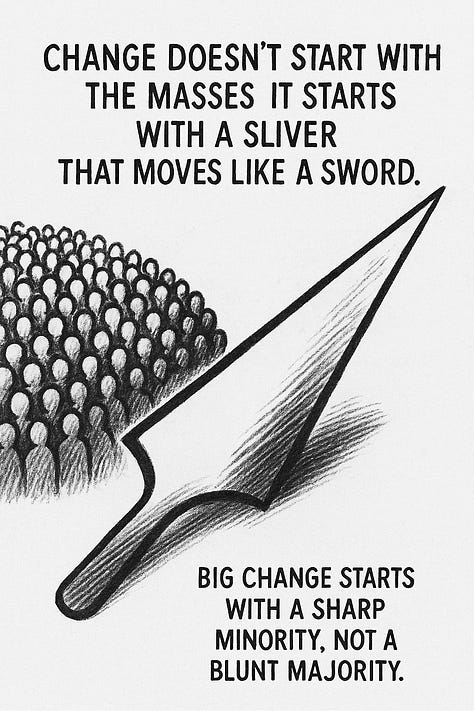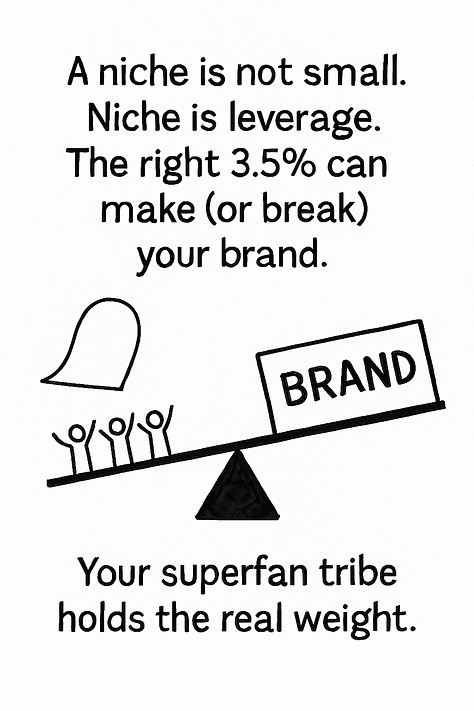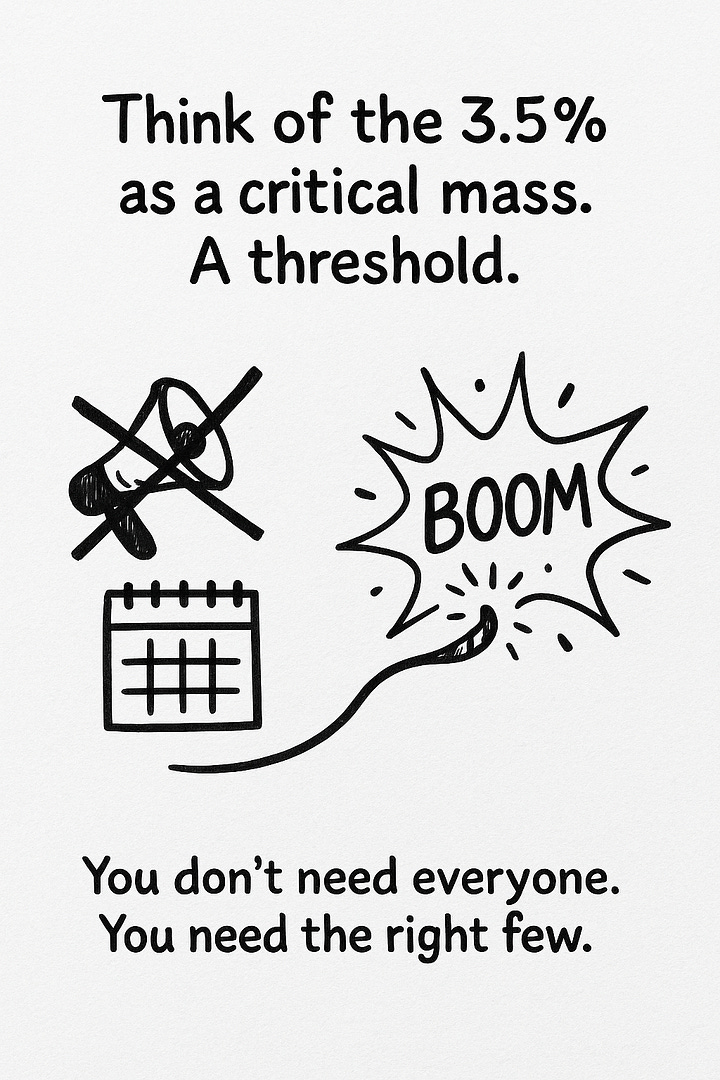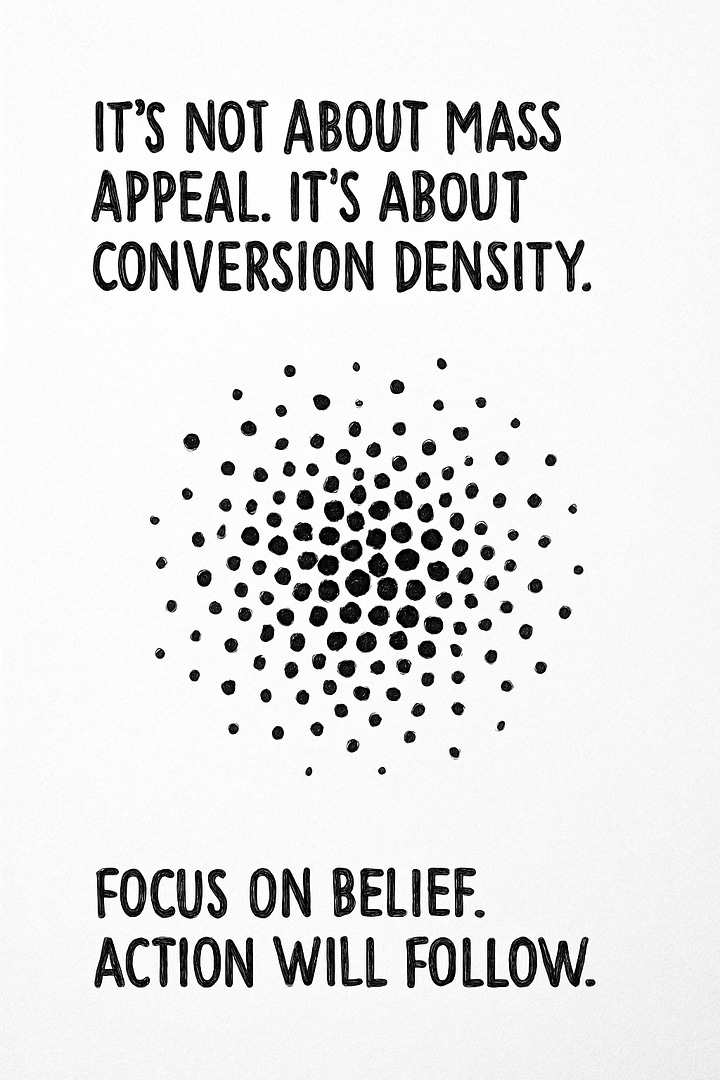The 3.5% Rule: How a Political Protest Theory Explains Commercial Virality and Growth
Discover how the 3.5% rule from political protests explains product virality, brand power, and niche-driven growth. From Tesla to K-Factor, learn how small groups spark big change.





“Change doesn’t start with the masses. It starts with a sliver that moves like a sword.”
That line came to mind as I read Scott Galloway’s sharp take on protests and pageantry in his piece, Pomp vs. Protest. What stuck with me wasn’t the imagery or even the politics; it was the data, specifically, the 3.5% rule.
Political scientist Erica Chenoweth found that when just 3.5% of a population engages in sustained, nonviolent protest, the regime almost always collapses. Not sometimes. Not occasionally. Almost always. You don’t need the masses, you need a committed few.
And that got me thinking.
What if this wasn’t just a theory for revolutionaries in the streets, but also for revolutionaries in the boardroom? What if the same dynamics that topple dictators could also build unicorns?
In this post, we’ll explore how the 3.5% rule (born from civil disobedience) offers a surprisingly powerful lens for understanding product virality, user adoption, and market disruption. From Tesla’s recent fall from grace to the viral math of the K-factor, let’s connect the dots between protests and profits. It might just change how you think about growth.
1. What Is the 3.5% Rule and Why It Matters
In political science, the 3.5% rule answers a big question with a small number: “What is the minimum threshold for political movements to succeed?” Erica Chenoweth, a Harvard political scientist, crunched the data and found a pattern: when just 3.5% of a population engages in sustained, nonviolent protest, change almost always follows.
This isn’t theory. Its history:
Philippines, 1986: People Power ousted a dictator with just a sliver of the population taking to the streets.
Sudan, 2019: 3.6% of citizens mobilised to force regime change under al-Bashir.
The takeaway? It’s not about making noise. It’s about sustained collective action by a committed minority.
And that same principle might just be the most underutilised growth strategy in your growth marketing deck.
2. From the Streets to the Boardroom — Commercial Implications
Let’s flip the question:
If 3.5% can collapse governments, what can it do to a company?
Take Tesla, which now faces protests and boycotts stemming from worker rights issues, rising controversies, and its CEO’s antics. Since February, Tesla’s sales in Europe have plummeted by half, and its share price has taken a hit amid a wider demand slump.
The same passionate minority that built Tesla’s brand? They can dismantle it just as fast.
Lesson for growth marketers: In the commercial world, a niche is not small. Niche is leverage. The right 3.5% can make (or break) your brand.
3. The Growth Link — Virality and the K-Factor
If you’re in growth marketing, you’ve likely wrestled with this question: “How do I go viral?”
The answer lives in math. Specifically, the K-Factor.
As I wrote in this piece, the K-Factor is the virality coefficient: if each user brings in more than one new user (K > 1), your product grows exponentially.
So, how does this relate to the 3.5% rule?
Think of the 3.5% as a critical mass. A threshold. Once that core group is activated (and passionate) they become your super spreaders. Not in a public health way, but in a brand religion way. They tell, share, repost, and evangelise.
Need proof? Look at:
Clubhouse: Elite tech circles drove early adoption.
Threads: Launched with influencer seeding and Meta’s ecosystem power.
NFTs: Fueled by tribal energy before mainstream caught up (or crashed).
4. The Hidden Power of 3.5% in Brand Strategy
Most growth marketers obsess over the wrong numbers.
They want 1 million impressions. 100K followers. A TikTok that “blows up.”
But what if all you needed was 3.5% who gave a damn?
It’s not about mass appeal. It’s about conversion density. You want people who:
Care
Act
Recruit others to the cause
Here’s how to find and activate your 3.5%:
Leverage zero-party data: Don’t guess what your users want, ask them.
Build community before the funnel: Engagement beats eyeballs.
Create cult brands: Belief beats branding.
Examples:
Glossier: Built a beauty brand on blog readers and DTC believers.
Peloton: A fitness machine that became a lifestyle tribe.
Gymshark: From garage startup to global brand by owning the fitness micro-movement.
Final Thoughts | Be the Spark, Not the Bonfire
Here’s the thing about movements — whether in politics or business: they don’t start big. They start focused. Sharp. Intentional.
You don’t need to boil the ocean to make a difference.
You just need to heat up 3.5% of it, the ones who believe, act, and recruit.
So, the next time you’re chasing virality or growth, don’t ask “How do I reach everyone?” Ask instead:
👉 “Who are the few that can’t stop talking about us?”
👉 “Have I given them something worth spreading?”
Because growth isn’t about volume.
It’s about conversion density: how tightly you pack passion, belief, and momentum into a small tribe that moves markets.
Want to build your own 3.5% tribe?
Start by creating something worth believing in. The rest will follow.
